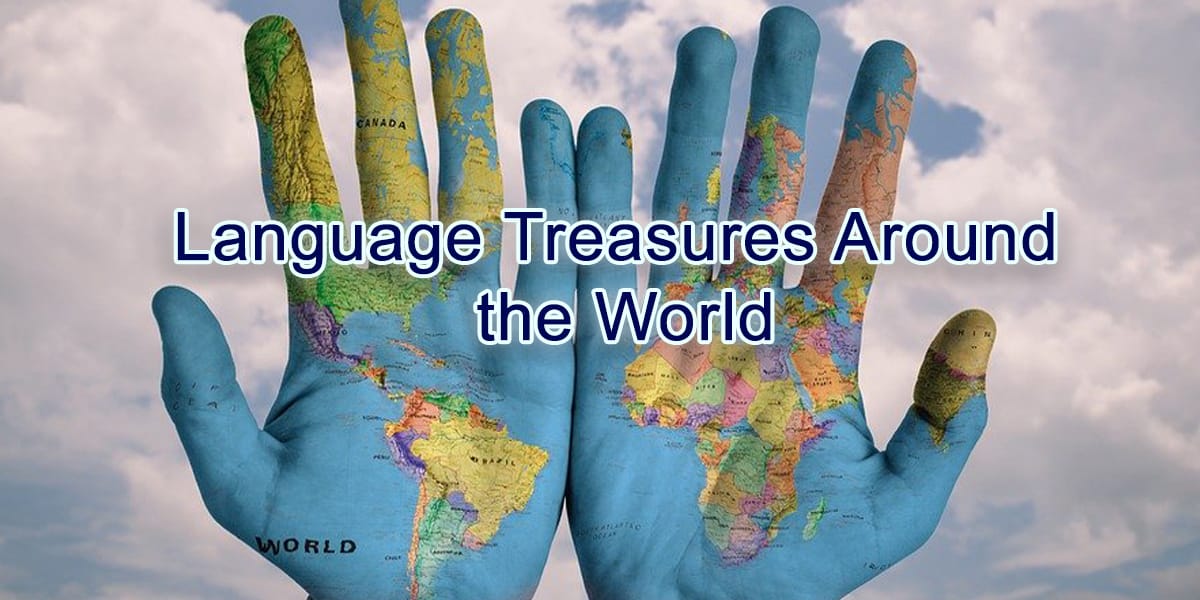Language Treasures: Uncovering Unique and Endangered Languages Around the World

Language Treasures: Uncovering Unique and Endangered Languages Around the World
Languages are not just communication tools but repositories of culture, history, and identity. People come across a rich tapestry of languages as we journey around the world’s varied landscapes, each with its own individual jewels ready to be discovered. In this essay, we start on a linguistic adventure to discover the world’s hidden gems of unique and endangered languages. Join us as we uncover the stories behind these linguistic treasures and shed light on the importance of their preservation.
index
ToggleThe Beauty of Uniqueness
Every language holds within it a wealth of unique expressions, idioms, and cultural nuances that reflect the identity and worldview of its speakers. Exploring different languages gives us a better grasp of human variety and the huge number of ways people see and interpret their surroundings. For example, the Silbo Gomero language, used by the inhabitants of La Gomera in the Canary Islands, is a whistled language that enables long-distance communication across the island’s deep ravines and valleys. Similarly, the Nǀuu language, spoken by the San people in Southern Africa, includes a complex system of clicking consonants, allowing for an intricate form of oral storytelling. These distinctive linguistic characteristics pique our interest while also challenging our preconceived conceptions of what language may be.
The Threat of Extinction
Experts say more than half of the world’s 7,000 languages are endangered. Globalization, urbanization, and the dominance of major languages have all contributed to the fast loss of smaller, lesser-known languages. As a result, countless cultural traditions, historical knowledge, and indigenous perspectives are at risk of being forever lost. Language extinction is an irreversible loss for humanity since each language comprises a unique way of thinking, seeing, and interpreting the cosmos.
The Last Speakers
Within communities where languages are endangered, a few individuals often remain the last fluent speakers of their mother tongues. These language custodians play a crucial role in preserving their linguistic heritage, as they hold the key to unlocking the knowledge, stories, and cultural practices embedded within their languages. Despite their challenges, including limited resources, opportunities for intergenerational transmission, and social pressures to adopt dominant languages, these last speakers dedicate themselves to passing on their languages to younger generations. Their efforts are essential for maintaining their communities’ cultural identity and resilience.
Language Revitalization Efforts
Numerous organizations, linguists, and communities have initiated language revitalization projects worldwide in response to the alarming rate of language endangerment. These efforts encompass a range of strategies, including community-led language classes, immersion programs, the development of educational materials, and the integration of endangered languages into digital platforms and social media. For instance, the Maori language revitalization movement in New Zealand has achieved significant success through initiatives like Te Ataarangi, a language-learning approach emphasizing spoken communication and cultural immersion. Similarly, the revival of Hebrew in Israel is a testament to the power of concerted efforts to reintegrate endangered languages into public life.
Preserving the Shared Heritage
Language is not solely a means of communication but also a vessel for cultural heritage and collective memory. Each language embodies unique ways of perceiving and interacting with the world, encapsulating centuries of accumulated wisdom, knowledge, and cultural practices. By recognizing the importance of linguistic diversity and actively supporting language preservation efforts, we contribute to preserving our shared global heritage. In addition, embracing linguistic variety enhances cultural understanding, empathy, and mutual respect among individuals and groups, allowing us to create a more inclusive and peaceful society.
The Linguistic Landscape
When we explore the linguistic landscape of a region, we encounter the visible manifestations of language diversity in public spaces. Multilingual street signs, billboards, shop names, and public notices are tangible reminders of the coexistence of multiple languages within a community. The linguistic landscape not only reflects linguistic diversity but also reflects a particular region’s history, cultural dynamics, and social interactions. Bilingual education systems, language policies, and using indigenous languages in official contexts further shape the linguistic landscape, highlighting the efforts to preserve and promote linguistic diversity.
The Role of Technology
Technology plays a crucial role in language documentation, preservation, and revitalization efforts in the digital age. Language researchers and community members utilize innovative technologies to create digital archives of linguistic resources, develop language learning apps, and facilitate remote collaboration among speakers of endangered languages. These technologies enable greater accessibility to language materials, provide platforms for language revitalization initiatives, and empower communities to take ownership of their linguistic heritage. By harnessing the power of technology, endangered languages can reach broader audiences, fostering pride and interest in language preservation among speakers and non-speakers.
Language and Identity
Language is an essential component of both our individual and communal identities. It shapes our thoughts, emotions, social interactions, and worldviews. When a language becomes endangered, communities face the threat of losing linguistic variety, cultural identity, and social cohesiveness. Language loss can lead to estrangement from one’s forebears, a breakdown in intergenerational communication, and a reduced ability to communicate cultural ideas and viewpoints.
By preserving languages, we affirm the richness of human identities, honour the wisdom of our ancestors, and contribute to the well-being and self-esteem of language communities.
Language Endangerment Hotspots
While language endangerment is a global issue, certain regions are particularly vulnerable due to historical, social, or political factors. These language endangerment hotspots often coincide with areas rich in indigenous languages, remote regions with limited educational resources, or places affected by historical marginalization. For example, the Pacific Islands face a significant risk to their linguistic diversity due to the dominance of colonial languages and the limited opportunities for language transmission. Similarly, the Amazon rainforest is home to numerous indigenous languages threatened by deforestation, displacement, and cultural assimilation. By shedding light on these hotspots, we raise awareness of the urgent need for targeted preservation efforts and support initiatives that empower language communities.
The Importance of Language Documentation
Language documentation serves as a critical tool in preserving and revitalizing endangered languages. Linguists and language activists collaborate to collect, analyze, and store linguistic material, such as recordings of native speakers, lexical databases, grammatical descriptions, and cultural text translations. Language documentation captures the essence of a language and provides valuable resources for future research, language revitalization efforts, and the transmission of knowledge. Furthermore, it contributes to linguistic diversity studies, comparative linguistics, and the broader understanding of human language capabilities.
Conclusion
As we journey through the diverse and enchanting world of unique and endangered languages, we discover their immense value as cultural, historical, and linguistic treasures. These languages are not merely tools of communication but gateways to vibrant and rich cultural heritage. By recognizing the beauty and importance of these languages, supporting revitalization efforts, and fostering linguistic diversity, we contribute to a more inclusive and harmonious global community. Let us cherish and protect these language treasures, for they are irreplaceable windows into human expression’s vast and intricate tapestry.
Recent Posts
Contact Us
+1 437 499 4559










